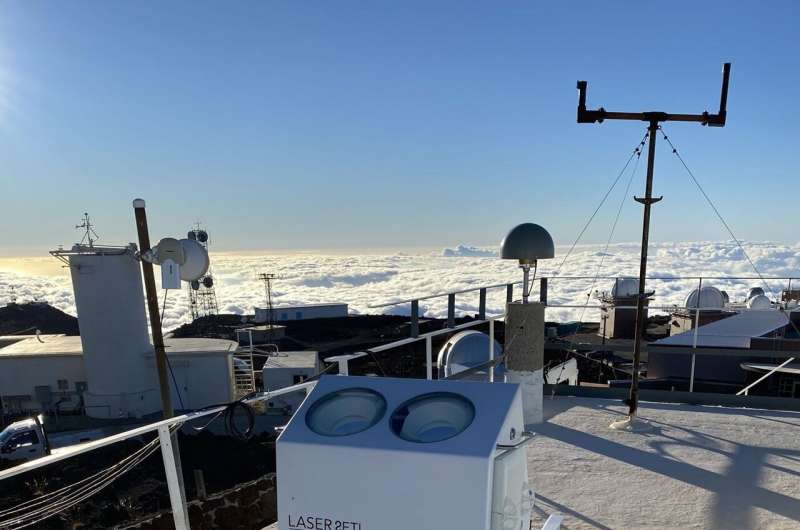LaserSETI installs 2nd observatory at Haleakala Observatory

Last summer the SETI Institute began installing a second LaserSETI Observatory, this time 10,000 feet above sea level at Haleakala Observatory, thanks to the University of Hawai'i's Institute of Astronomy (IfA). As a result of challenges involving equipment damaged during shipping, supply chain delays for replacement parts, equipment malfunctions and even a blizzard in Hawai'i, the installation was delayed but is now complete. While two of the four cameras are not fully functional and will be replaced, observations are now possible and data collection is underway. The staff at the IfA has provided invaluable assistance throughout the setup process especially during times when it was not possible for LaserSETI staff to be onsite due to COVID restrictions and other logistical challenges.
LaserSETI is a unique astronomy program designed to detect potential laser pulses originating from outside the solar system. It is building a global network of instruments to monitor the entire night sky. Each LaserSETI device consists of two identical cameras rotated 90 degrees to one another along the viewing axis. They work by using a transmission grating to split light sources up into spectra, then read the camera out more than a thousand times per second. The first LaserSETI observatory is at the Robert Ferguson Observatory in Sonoma, CA. Cameras at the new site in Hawai'i will be aimed east, and the California devices are be aimed west. The two observatories will provide redundant coverage of the sky over the Pacific because, as Carl Sagan said, "extraordinary claims require extraordinary evidence."
"LaserSETI is attempting a big step forward in SETI, the search for extraterrestrial intelligence. It's the first project in either optical or radio astronomy designed to cover the entire sky. When you don't know where to look, an instrument with an enormous field-of-view and time range allows us to cover a lot more ground than ever before." said Eliot Gillum, principal investigator for LaserSETI. "There are so many people who've helped make LaserSETI possible that I'd like to thank. From the project team to other scientists at the SETI Institute, to our Indiegogo backers and private donors, to our outstanding observatory partners at Institute for Astronomy and Ferguson Observatory, it takes a village to tackle a project this audacious."
"The possibility that life exists elsewhere is exciting for the public, especially with the reports of biologically interesting molecules in the atmosphere of Venus, the selection of two Venus missions by NASA, the Mars Perseverance rover mission, and the upcoming Europa Clipper mission to explore Jupiter's moon," said Karen Meech, IfA interim director. "UH has had a long involvement in Astrobiology to explore the possibility of life elsewhere—both through research related to formation of habitable worlds, discovery of exoplanets, and the development of new innovative mirror and telescope technology to detect planets. It is exciting to add a new direction to this investigation by searching for technological signatures."

Traditionally optical SETI projects have relied on photomultiplier tubes to detect laser flashes, essentially making them one-pixel cameral and enabling only a small part of the sky to be observed. LaserSETI uses two cameras with a commercial lenses that images approximately 75 degrees of the sky onto off-the-shelf solid-state detectors. In front of the lens is a grating that transforms any light source in the camera's field-of-view into a double rainbow-like spectrum. While stars will produce a complete spectrum from blue to red, a laser will only show up at its characteristic wavelength (think of your red laser pointer). Able to distinguish different colors of light, LaserSETI instrumentation is not limited to extremely short flashes as conventional SETI searches have been. And because the devices are wide-angle, it's possible to cover the entire night sky with a relatively small number of them, thereby keeping costs down.
Initial funding for LaserSETI was raised through a crowdfunding campaign in 2017, with additional financing provided through private donations. The plan calls for ten more instruments deployed in Puerto Rico, the Canary Islands, and Chile. When this phase is complete, the system will be able to monitor the nighttime sky in roughly half of the western hemisphere.
Next steps for LaserSETI at Haleakala will include replacing two of the cameras to bring the system to full functionality. This is expected to take place by January of 2022.
Provided by SETI Institute





















